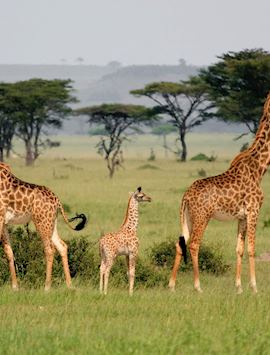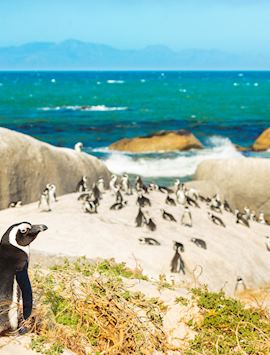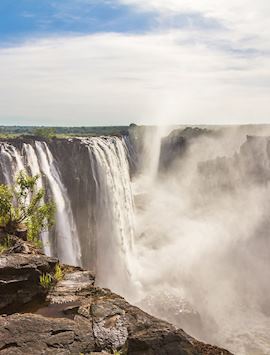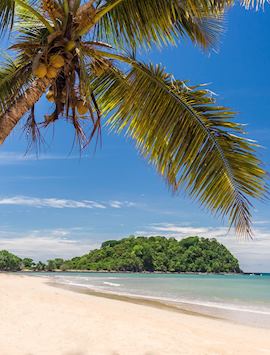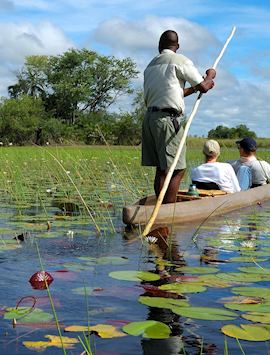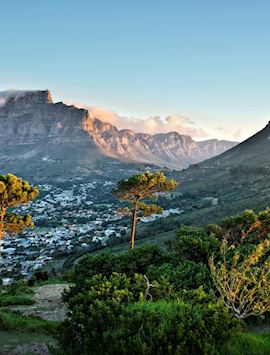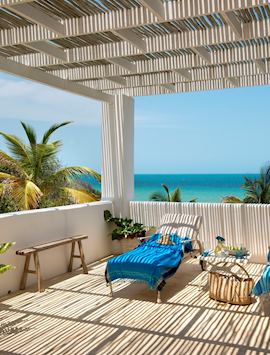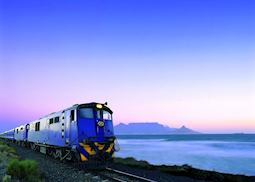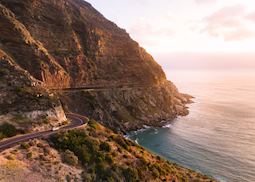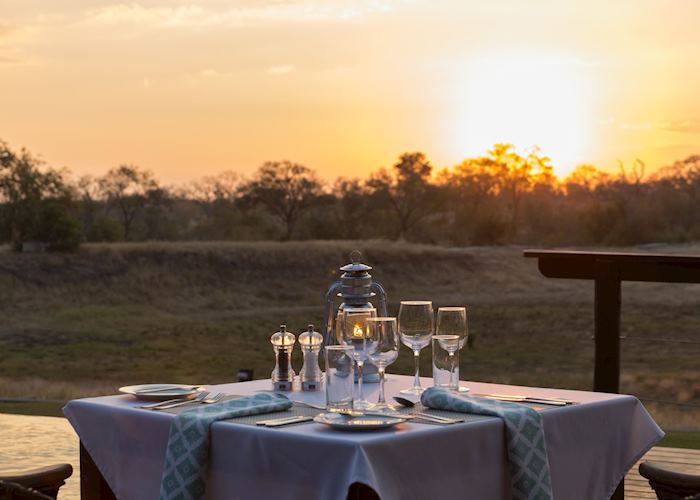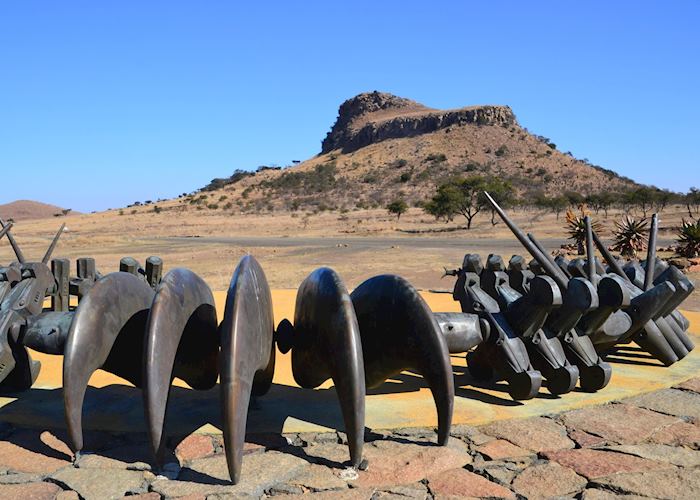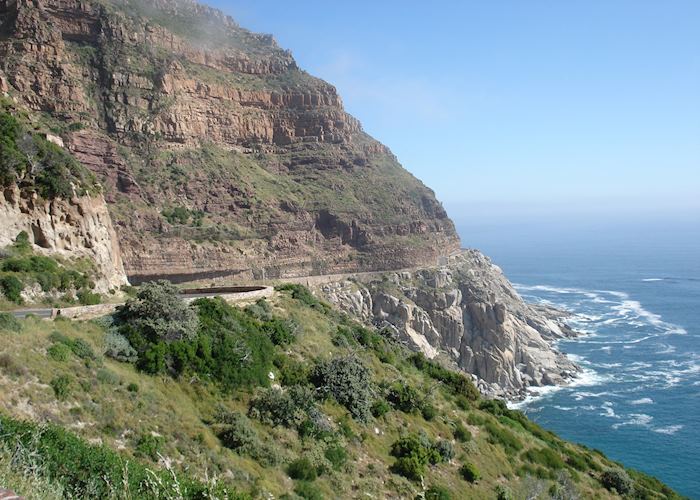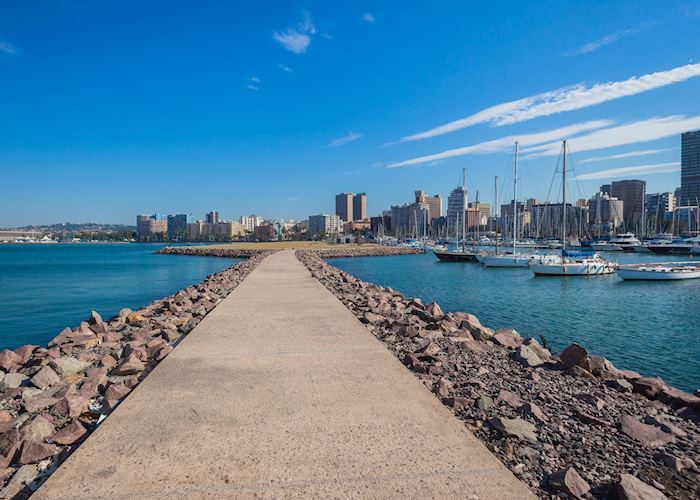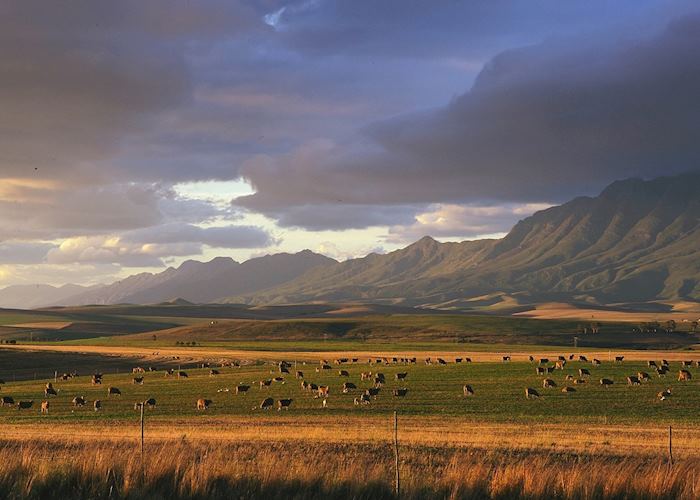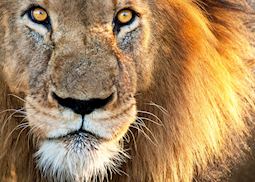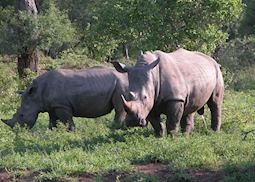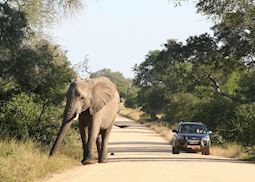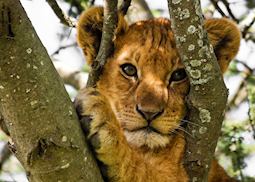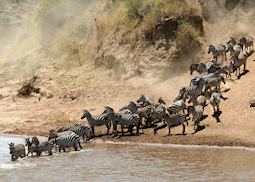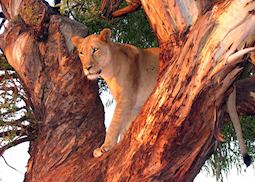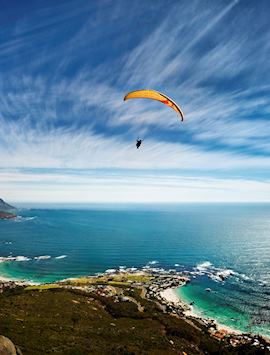
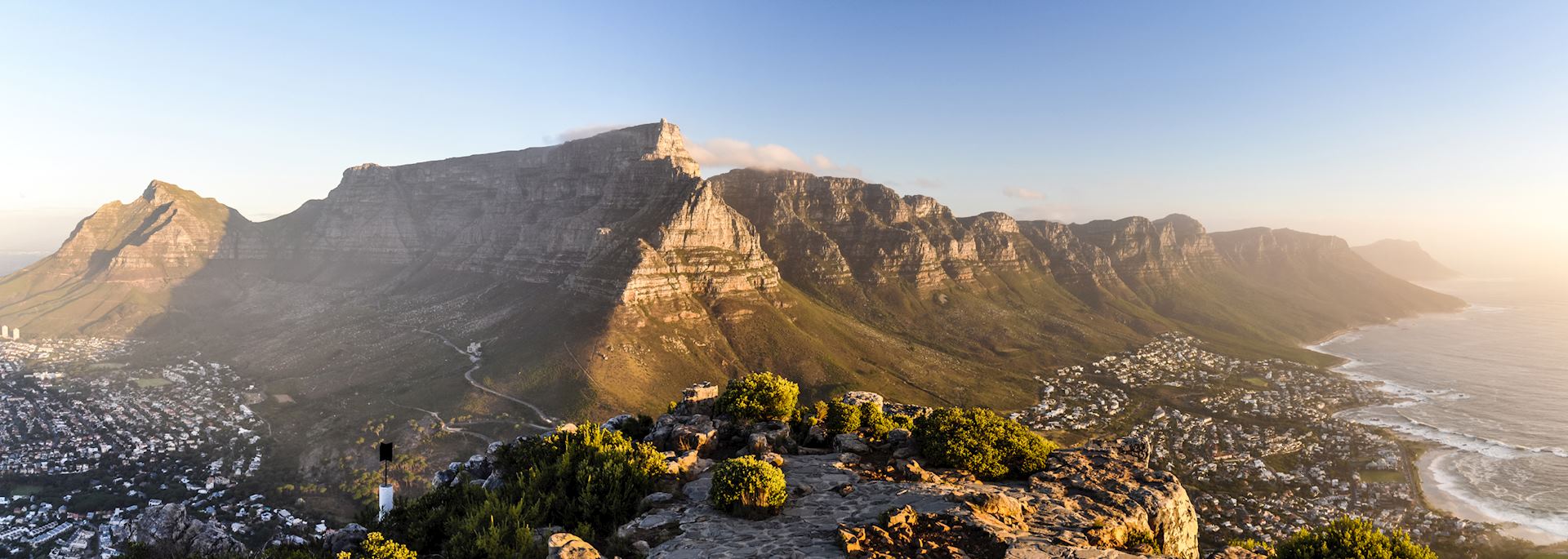
Tailor-made South Africa holidays shaped around your passions
South Africa is beguiling in its variety. It’s confident, cosmopolitan Cape Town but it’s also big game viewing in Kruger National Park, the farmsteads and valleys of the Winelands, and the remote, wild Elephant Coast. Our South Africa specialists have thoroughly explored this land of contrasts, from the north to the Cape Peninsula, and can recommend the best South African experiences for you.
On your holiday to South Africa, you could learn about the country’s colonial past in the battlefields of KwaZulu-Natal, or focus on its more recent history with a visit to Robben Island. Take a relaxed road trip along the Garden Route, enjoying views over the wave-lashed coast. Or go on a Big Five safari in the Eastern Cape. Meanwhile, rail journeys traversing South Africa’s mountain ranges, grasslands, and semi-arid Karoo Desert allow you to see the country’s untouched, far-flung areas.
Reduced fares currently available through our airline partners
We have a number of reduced fares available with selected airline partners. Click below for further details on booking and travel periods.
View offersSuggested tours for South Africa
Explore Cape Town on a guided walk, spot whales off Plettenberg Bay, and take guided game drives on a Kruger safari. Our range of suggested itineraries is a great starting point as you begin to plan your trip to South Africa.
Suggested activities for South Africa
Hike up Table Mountain with a guide, explore the wilderness of the Cape Peninsula, and ride a historic tram through the wine estates surrounding Franschhoek. Whatever your interests, our specialists will suggest experiences designed to enhance your trip to South Africa.
-
A journey aboard The Blue Train ![The Blue Train with Table Mountain in the distance]()
A journey aboard The Blue Train
Cape TownA journey aboard The Blue Train
Travel between Pretoria and Cape Town aboard the Blue Train to experience one of South Africa’s finest rail journeys. You’ll pass through mountains, farmland, and vineyards, pausing to explore old diamond-mining towns en route.
View details -
A journey on Rovos Rail ![Club lounge, Rovos Rail]()
A journey on Rovos Rail
Cape TownA journey on Rovos Rail
Travel across Southern Africa in the restored trains of Rovos Rail. With several luxury journeys to choose from, you can explore the regions that most interest you in both comfort and style.
View details -
Cape Peninsula scenic tour ![Chapman's Peak Drive, Cape Town]()
Cape Peninsula scenic tour
Cape TownCape Peninsula scenic tour
The Cape Peninsula is an area of dramatic natural beauty and huge ecological significance, which manages to retain a wild feel despite its huge popularity with visitors. As you drive south from Cape Town, you pass through the exclusive suburbs of Camps Bay and Clifton before continuing onto Hout Bay and through Constantia, where the road meanders behind Table Mountain and down onto the coast.
View details
More choice for your safari
- Inspiration across all our African destinations
- Trip suggestions based on your interests
- Advice on where to safari, when
- Meet our team of safari experts
Best time to visit
Our specialists advise on the best months to visit South Africa, including information about climate, events and festivals.
Request our brochure
Covering all seven continents, The World Your Way shows you how you can see the world with us. It features trip ideas from our specialists alongside hand-picked stays and experiences, and introduces our approach to creating meaningful travel experiences.
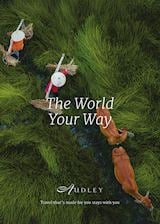
Useful information for planning your holiday in South Africa
South Africa has 11 official languages: Afrikaans, English, Sepedi, Southern Ndebele, Southern Sotho, Swazi, Tsonga, Tswana, Venda, Xhosa, and Zulu. Most South Africans speak English, and signs, including road signs, are written in English and Afrikaans.
South Africa’s currency is the rand (R or ZAR).
For the latest travel advice for South Africa, including entry requirements, health information, and the safety and security situation, please refer to the Foreign, Commonwealth & Development Office website.
You’ll find African, Indian, Malaysian, and European influences in South Africa’s cuisine. On a guided food tour of Cape Town you might try Indian bunny chow (curry served in a hollowed-out bread loaf), South African pap, and Dutch koeksisters (honey-infused pastries).
In safari camps and lodges, food and drink is included in your stay and tends to be a mix of international fare and local dishes. Your specialist can let your camp or lodge know of any special dietary requirements in advance.
South Africa is also renowned for its wine, and there are many vineyards you can visit, particularly in the Cape Winelands, where there’s also a big farm-to-table ethos. We can arrange for you to explore with a wine expert who’ll help choose the best food-and-wine pairings for your palate.
South Africa is a large and varied country with lots to see and do, including a safari in Kruger National Park to spot the Big Five and more. You could also explore Cape Town’s history, culture, and food on privately guided tours, hike or ride a cable car to the top of Table Mountain, and visit Robben Island, where Nelson Mandela was imprisoned.
Elsewhere, you can go wine tasting in the Cape Winelands with a wine master, or see ancient San rock art in the Cederberg Mountains. You could also enjoy a road trip along the Garden Route to see African penguins and whales off the coast. Our specialists have explored South Africa thoroughly and can mix and match the aspects of the country you’d most like to experience. Read our South Africa highlights guide for more ideas.
Kruger National Park is South Africa’s best safari destination, home to all of the Big Five species and much more — we recommend staying in a private reserve within the Greater Kruger area, like Sabi Sands, where you’ll enjoy a more intimate experience.
Cape Town sits between the coast and Table Mountain and offers plenty to see and do for a wide range of interests, or you could visit Johannesburg to experience a different side to South African city life and learn about its apartheid history. You can hop between vineyards in the Cape Winelands, sampling wines as you go. And, along the Garden Route, you can visit small coastal towns like Plettenberg Bay and Knysna.
Our specialists will draw on their own travels to plan a trip that includes the best places to go in South Africa matched to the experiences you want to have.
There are a wide range of hotels, guesthouses, camps, and lodges across South Africa, so where you stay depends on your preferences and budget. You’ll find luxurious hotels in the cities, intimate, locally owned guesthouses in coastal towns and more rural areas, and, in safari areas, a mix of tented camps and solid-structure lodges, often with pools and private decks. Our specialists visit each option to hand-pick the very best on offer, and can help you choose which is right for you from our collection.
Yes, South Africa is a fantastic safari destination, particularly Kruger National Park and the private reserves that border it. Here, on game drives, you’re likely to see a wide variety of wildlife, including at least some of the Big Five species (lion, leopard, rhino, elephant, buffalo), cheetah, wild dog, giraffe, hyena, zebra, and many bird species. Your experienced guides can also take you out on walking safaris, where you might track rhino on foot and learn to identify smaller, lesser-known species. You can find out more by reading our guide to experiencing a South Africa safari.
It takes around 11 hours 30 minutes to fly directly from London to Johannesburg or Cape Town.
South Africa’s time zone is GMT+2, so you shouldn’t experience much jet lag.
South Africa is best explored by road. There are also several luxurious, scenic train journeys that we can build into your route. Internal flights are also an easy way to visit remote areas or combine South Africa with another destination. If you choose to travel by road, we’ll make the arrangements for you to drive yourself or travel with a private driver-guide. Our specialists have tried and tested routes across South Africa to find out the best ways to get around and can plan all the logistics of your trip.
Use our travel tool to find up-to-date visa and passport requirements for South Africa. Enter where you’re travelling to and from (including any stopover destinations en route or flight layovers), along with your intended travel dates and passport details, for a full list of requirements.
We suggest asking your doctor for up-to-date vaccination advice for South Africa, and it’s a good idea to be up to date with the recommended vaccinations for your home country. Another place to check the recommended vaccinations is the Travel Health Pro website.
South Africa in pictures
Our expert guides to travelling in South Africa
Written by our specialists from the viewpoint of their own travels, these guides will help you decide on the shape of your own trip to South Africa. Aiming to inspire and inform, we share our recommendations for how to appreciate South Africa at its best.
-
![South Africa: the Audley way]()
South Africa: the Audley way
There’s more to South Africa than first meets the eye. From vineyard hopping with a wine master and hiking a lesser-known route up Table Mountain with a local to intimate safaris in private reserves, we can help you explore the country in the most meaningful way — your own.
-
South Africa safaris: our guide to the parks & reserves ![A lion in the Kruger National Park]()
South Africa safaris: our guide to the parks & reserves
South Africa safaris: our guide to the parks & reserves
Home to a star-studded cast of wildlife and some of the best parks and reserves across the continent, South Africa is the ideal destination for first-time and more experienced safari-goers alike. Specialist Chris reveals what you can do and see there.
Read this guide -
Family holidays & safaris in South Africa ![White Rhino]()
Family holidays & safaris in South Africa
Family holidays & safaris in South Africa
From sunny beaches to remarkable whale watching and child-friendly safaris, South Africa offers a huge variety of experiences for families of all ages. Our South Africa specialist Toby explains how to get the most of your time in the country.
Read this guide -
What to do in South Africa: our highlights ![Table Mountain South Africa]()
What to do in South Africa: our highlights
What to do in South Africa: our highlights
From the vibrant capital city, Cape Town, to the world-famous Kruger National Park, home of the Big Five, South Africa is a land of exciting contrasts. Our specialists can help plan your ideal first visit to this African giant.
Read this guide -
Self-driving in South Africa ![Self-driving in the Kruger National Park]()
Self-driving in South Africa
Self-driving in South Africa
With well-maintained roads and little traffic, a self-drive trip is a flexible way to explore South Africa's southern coast. Country specialist, Toby, selects his favourite drive, taking in the Garden Route, South Africa’s Winelands and finishing with time on safari.
Read this guide


